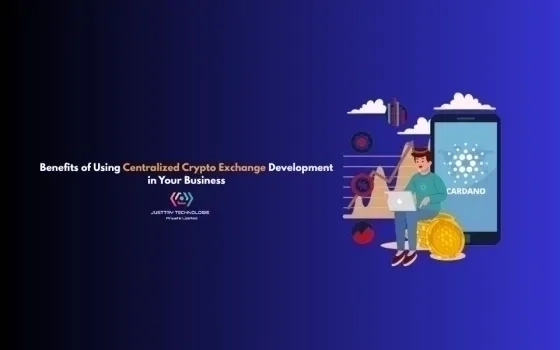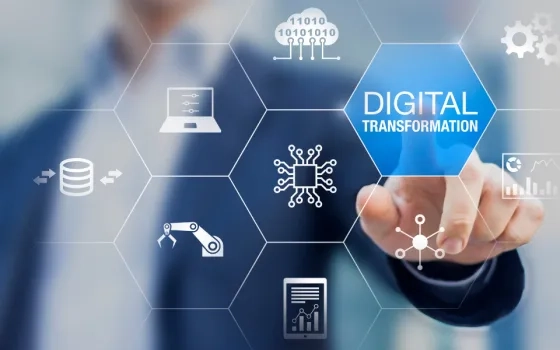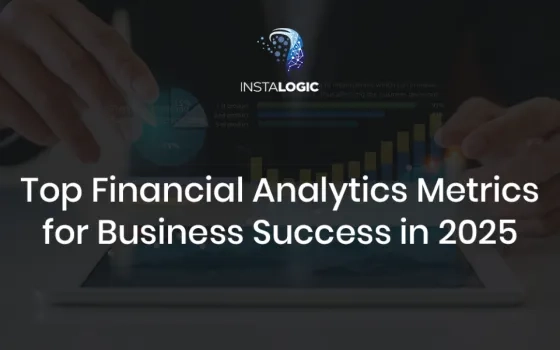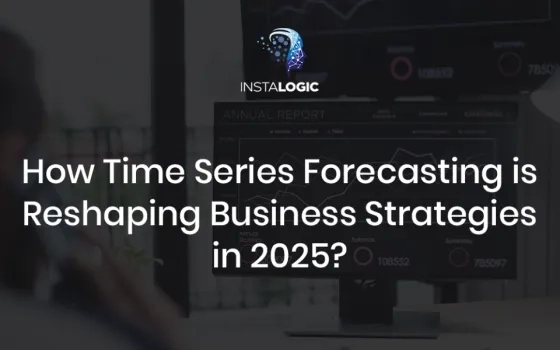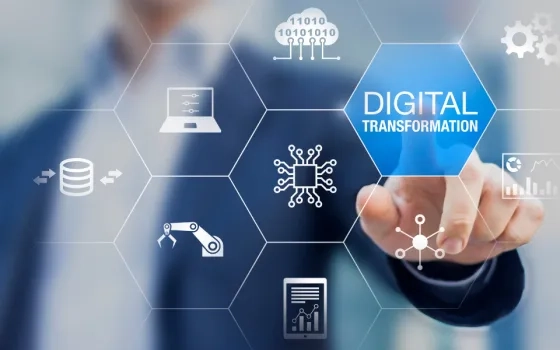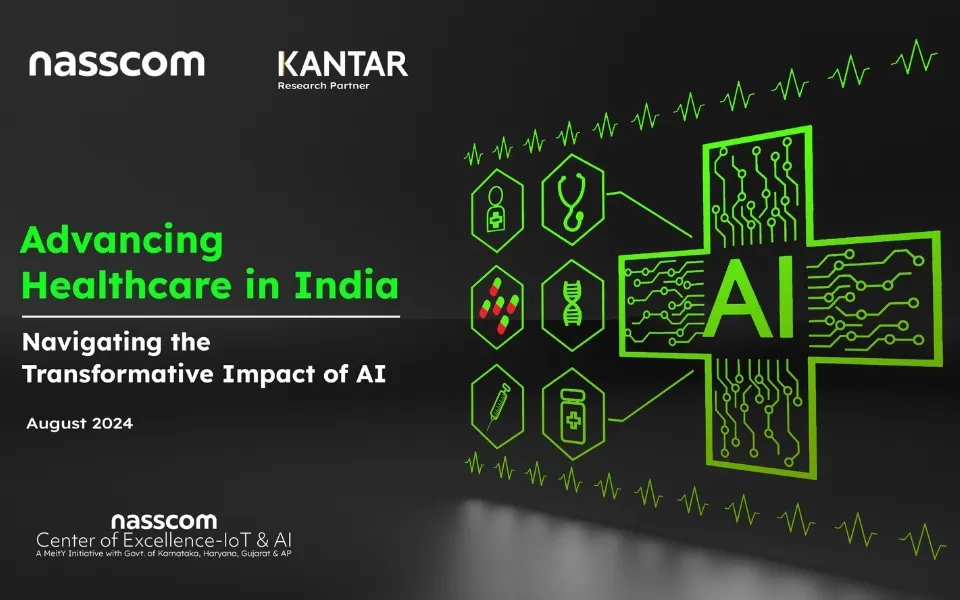
Healthcare analytics is the process of gathering patients’ current and historical medical data and then leveraging the data for creating actionable insights. Healthcare analytics primarily helps in managing and controlling the spread of disease by identifying the trends. The healthcare industry worldwide is using this technique to meet the current market demand and accelerate their businesses.


(data source : ezdatamunch.com) (data source : marketsandmarkets.com)
Delivering high-quality essential medical services is of utmost importance at these unprecedented times, and with the help of healthcare analytics, it is now possible to improve patient care, reducing medical expenditure and more services at a cheaper price, while ensuring that the patient’s safety and data confidentiality (which is of utmost importance in this process), under no condition,is compromised.
Healthcare Analytics in India
In India, whereas it’s true that alternative sectors like banking, insurance, and retail have controlled the ability of huge information with far more success, the health sector as compared looks to be insulant behind.
In 2019, health analytics accounted for approximately 10.81% of the Indian digital health market. By 2025, India's health analysis market is expected to reach 47.04 Billion Indian Rupees and grow at a compound annual growth rate of approximately 20.49% from 2020 to 2025 (data source: researchandmarkets.com). Factors such as increasing attention to collecting and analyzing data from various health sources to improve customer service, technological advancement, and the increasing popularity of electronic medical records are expected to drive the growth of the health analysis market in India. In 2017, India's healthcare sector was worth 160 billion USD and it is estimated to reach up to 372 billion USD by 2022. The country's healthcare market has become one of the largest sectors in terms of revenue and employment and the industry is growing at a fast pace. (data source: statista)

 (data Source : IBEF)
(data Source : IBEF)
The Government of India is running several health missions related to health and family welfare, prevention and control of major communicable diseases and promotion of traditional and indigenous systems of medicines at the national level. Following are some of the missions which are running in India:
- National Rural Health Mission (NRHM) - 2005
- National AYUSH Mission - 2012
- National Urban Health Mission (NUHM) - 2013
- National Health Protection Mission (Ayushman Bharat Yojana/Pradhan Mantri Jan Arogya Yojana—PMJAY) - 2018
- Ayushman Bharat Digital Mission (ABDM) -2021
- Pradhan Mantri Atmanirbhar Swasth Bharat Yojana (PMASBY) - 2021
Almost 4,300 people lose their lives daily in India (including rural and urban) due to improper diagnosis and incorrect treatment of diseases(data source: businesswire.com). By using healthcare analytics these numbers are expected to fall drastically. Healthcare analytics is expected to reduce this patient mortality rate by using more advanced tools to diagnose and plan appropriate treatment methods.
Healthcare analytics in the USA
The Joint Commission (TJC) and Centers for Medicare & Medicaid Services (CMS) assist consumers in making the best healthcare decisions. The hospitals are evaluated based on standardized performance measures and reported on how well they can provide healthcare services. They gather data from the hospitals; then EHR and EMR are performing analytics in the United States.
In the U.S. 94 percent of hospitals have adopted EHRs. Each patient has their own digital health record which includes everything from allergies to demographic information.
According to the Center for Disease Control (CDC), on average, 130 Americans die every day from an opioid overdose. In fact, in 2017 opioid overdose became the most common cause of accidental death in the U.S., overtaking road accidents. By applying healthcare analytics, Blue Cross Blue Shield was able to identify 742 risk factors that predict with high accuracy whether or not someone is at risk for opioid abuse.
Above are a few examples of the impact of data analytics in the healthcare sector. Healthcare analytics has the potential to change the healthcare market completely with better services and low death rates.
What are EHR and EMR?
The Electronic Health Record (EHR) is a longitudinal electronic record of a patient's health information generated by one or more encounters in any healthcare environment. Patient demographics, progress notes, issues, prescriptions, vital signs, previous medical history, immunizations, laboratory data, and radiological reports are all included in the EHR.
The Electronic Medical Record (EMR) is a digital version of a medical record. EMRs store a variety of medical information. The information includes medical history, prescriptions, drug allergies, and hospital bills, among other things.

In conjunction with other stakeholders, the Joint Commission aims to continuously improve health care for the public by reviewing health care organizations and inspiring them to excel in providing safe and effective care of the highest quality and value. They have quality measures as part of their accountability measures.
Patient safety data and an accountability measure matrix are submitted by hospitals and health care organizations, which TJC analyses.
Challenges in India
In India, handwritten prescriptions are still in practice, and rural areas do not have enough infrastructure capabilities to use software-generated EHR. The key issues when establishing an EHR-based system are high costs, functionality, and security. There is a wide scope of raising the coverage from the current 5% to 50% by leveraging the data analytics to its full extent(data source: health.economictimes.indiatimes.com).
How Healthcare Can Be Improved In India?
With India's digitization, it is now possible to collect data from a variety of data sources, both structured and unstructured. With the extensive usage of NLP on a variety of texts, greater analytics in the healthcare field are achievable. The National e-Health Authority of India (NeHA) was intended to be established in 2015 under the Ministry of Health and Family Welfare (MoH&FW), with the purpose of establishing India's e-Health ecosystem (Ministry of Health and Family Welfare, Government of India 2017). “To put down data management, privacy, and security policies, guaranteeing” is one of the NeHA's goals.Can we imagine a system where EMR and EHR are stored? Based on the historical data analysis, will India be able to give special benefits to all those hospitals, which are providing safety measures to their patients?
Following steps can be taken to create a centralized EMR-EHR system:
- Through NLP and scanning prescription hospitals, the patient's EHR and EMR data should be stored in the central system, where the patient data is linked to the Aadhar card (An unique number issued to every citizen in India and is a centralized and universal identification number) using digital Health ID which will be given to every citizen in India under Ayushman Bharat Digital Mission (ABDM).
- Like banks, all hospitals (starting from government hospitals) should be connected to a network

- Like the Reserve Bank of India (RBI), there can be a centralized agency to supervise hospital data; hospitals should be able to send their data to a central government-managed system
- This will not only allow us to improve patient safety and hospital quality but also predict the future health of patients and take appropriate preventive measures.
If developed countries like the US can implement this and reduce the number of accidents by a significant number, it is achievable for India to implement the same.
Additionally, we are keen to mention a few NLP innovations that can automate patient disease selection and remedy recommendations. The bots are designed in a way that they can interact with the customers and advise them on the immediate healthcare measures. The main purpose of the text summary is to provide a subset of the source data that depicts the key points with minimal redundancy and makes the processing time efficient. For example, Hospital Emergency Departments (ER) are busy places where prompt diagnosis and remedy selections play a vital role, hence, expert opinion is required. Document summarization and recommendation systems can be used to eliminate human errors at the preliminary diagnosis.
Nowadays, patients' data security is a big concern, and implementing document classification techniques would help to categorize the documents. This automated system will ensure that the critical data for the patient's identity is secured.
The Dawn Of A New Era!
Healthcare analytics is a part of the digital healthcare system, which uses technologies to provide enhanced health management services using IT and effective communication tools. Though at a nascent stage in India, healthcare analytics has the great potential to enhance healthcare capabilities and fill the gap between the lack of availability of clinicians and the limited capacity of clinics to serve patients with the help of AI and Data analytics.
Whether it is patient care, healthcare delivery, or consumer satisfaction, the Indian healthcare industry requires a complete overhaul and that is possible only by using Big Data Science and Analytics. The ability of big data to solve continually growing large data volumes with greater accuracy can change healthcare systems and delivery across the country. For example, symptoms analytics allows figuring out what happened, while root cause and predictive analytics enable understanding of why it happened and what is likely to happen in the future. Predictive analysis of medical history and health data of patients collated and stored on a cloud system can help doctors derive precision medicine, which can address alarming treatment concerns related to both Communicable and Non-Communicable Diseases.
About the Authors :
Nabanita Kar, Data and AI Studio, Globant
A tech evangelist, with 15 years of experience in data analytics applications. She has extensive experience in US healthcare and has worked with US hospitals, the joint Commissions, CMS. She has been successful in delivering data solutions to Fortune 500 companies.
Neeraj Kumar, Data and AI Studio, Globant
A techie with 6 years of IT experience in data-driven solutions. He has worked in different domains with on-premises and cloud technologies and delivered several cutting-edge solutions successfully.
About Globant
A digitally native company that helps organizations reinvent themselves to create a way forward and unleash their potential, Globant is the place where innovation, design and engineering meet scale. Globant is a disruptor in the professional services arena and we leverage the latest technologies and methodologies in the digital and cognitive space to help organizations transform in every aspect.
A pure-play in the digital and cognitive fields, Globant has a global presence with delivery centers in North America, Latin America, Europe, and Asia through which we offer a deep knowledge in the latest trends and technologies. With over 20,000 professionals present in 18 countries working for companies like Google, Rockwell Automation, Electronic Arts and Santander, among others, we are featured as a business case study at Harvard, MIT, and Stanford apart from being a member of the Cybersecurity Tech Accord (2019).
For more information, visit www.globant.com










